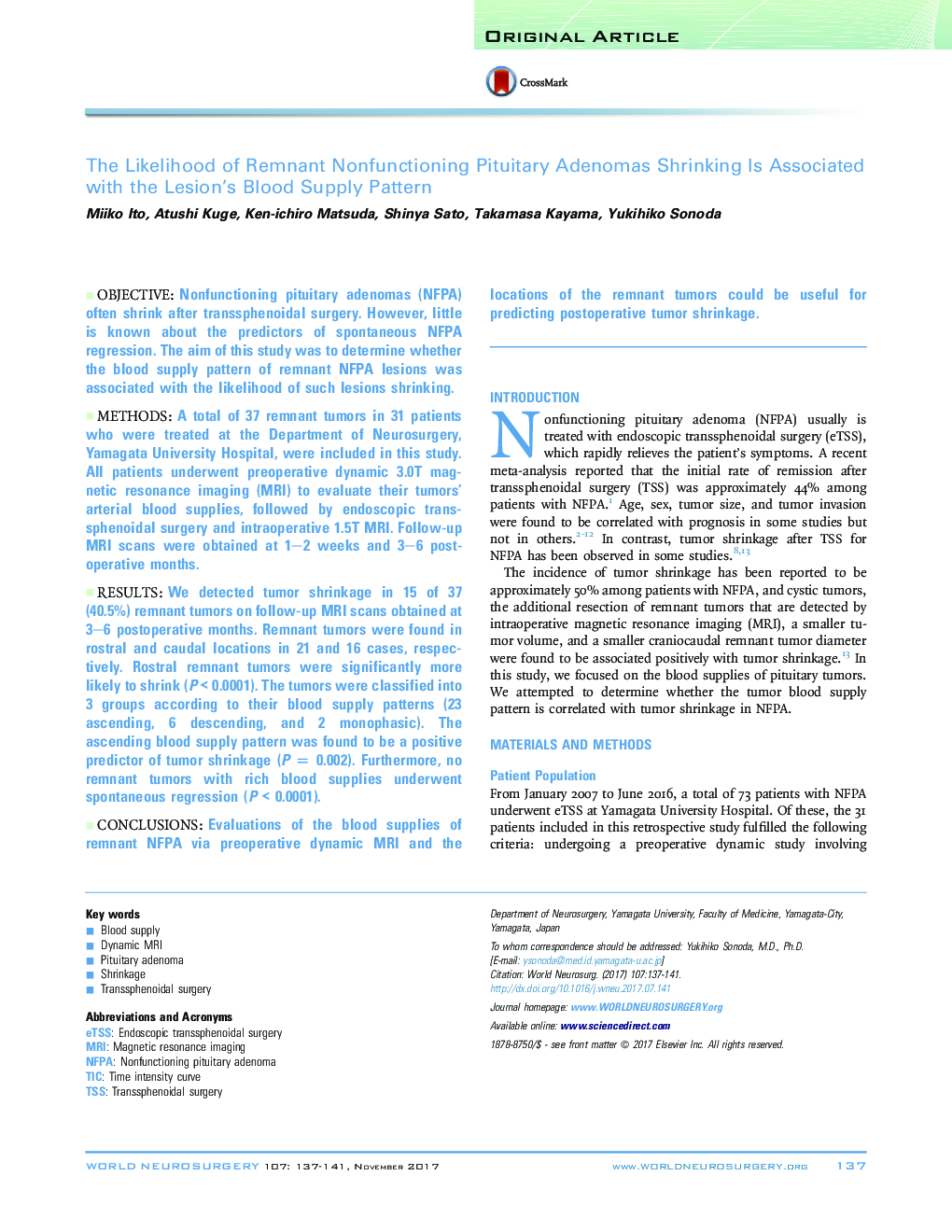| Article ID | Journal | Published Year | Pages | File Type |
|---|---|---|---|---|
| 5633867 | World Neurosurgery | 2017 | 5 Pages |
ObjectiveNonfunctioning pituitary adenomas (NFPA) often shrink after transsphenoidal surgery. However, little is known about the predictors of spontaneous NFPA regression. The aim of this study was to determine whether the blood supply pattern of remnant NFPA lesions was associated with the likelihood of such lesions shrinking.MethodsA total of 37 remnant tumors in 31 patients who were treated at the Department of Neurosurgery, Yamagata University Hospital, were included in this study. All patients underwent preoperative dynamic 3.0T magnetic resonance imaging (MRI) to evaluate their tumors' arterial blood supplies, followed by endoscopic transsphenoidal surgery and intraoperative 1.5T MRI. Follow-up MRI scans were obtained at 1-2 weeks and 3-6 postoperative months.ResultsWe detected tumor shrinkage in 15 of 37 (40.5%) remnant tumors on follow-up MRI scans obtained at 3-6 postoperative months. Remnant tumors were found in rostral and caudal locations in 21 and 16 cases, respectively. Rostral remnant tumors were significantly more likely to shrink (P < 0.0001). The tumors were classified into 3 groups according to their blood supply patterns (23 ascending, 6 descending, and 2 monophasic). The ascending blood supply pattern was found to be a positive predictor of tumor shrinkage (PÂ = 0.002). Furthermore, no remnant tumors with rich blood supplies underwent spontaneous regression (P < 0.0001).ConclusionsEvaluations of the blood supplies of remnant NFPA via preoperative dynamic MRI and the locations of the remnant tumors could be useful for predicting postoperative tumor shrinkage.
